1 of 74
Downloaded 18 times




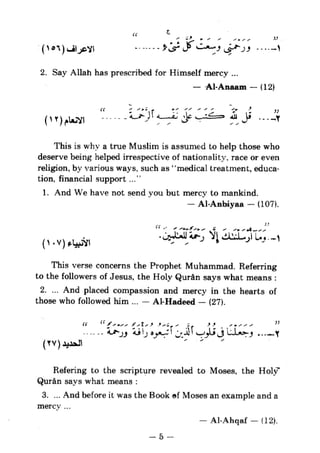


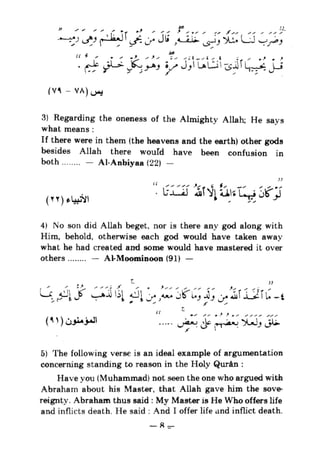
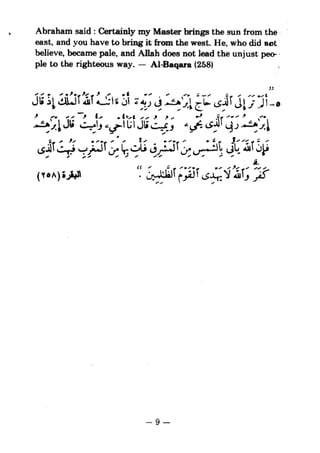
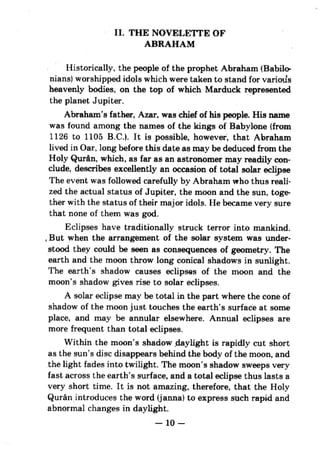
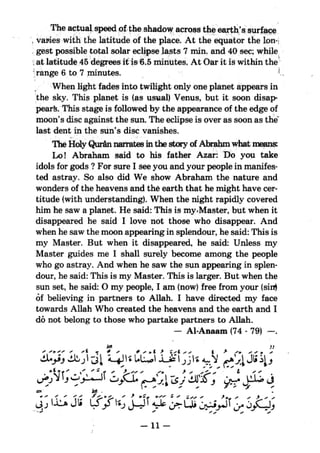

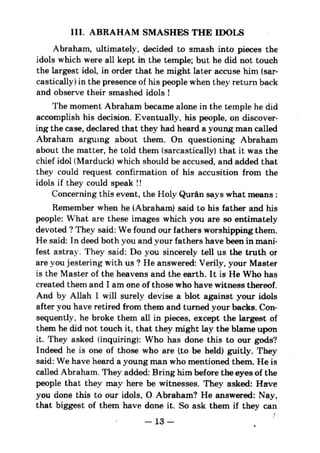


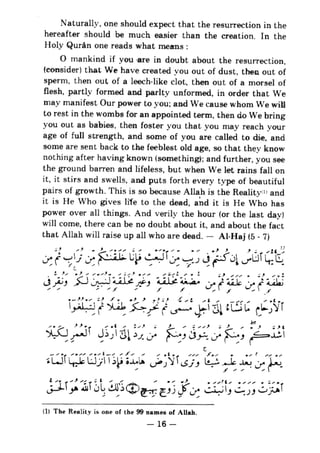
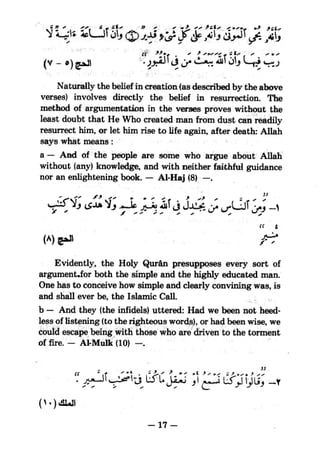
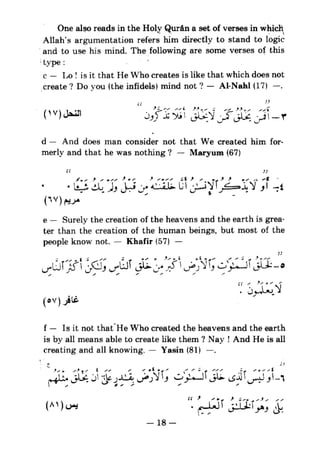
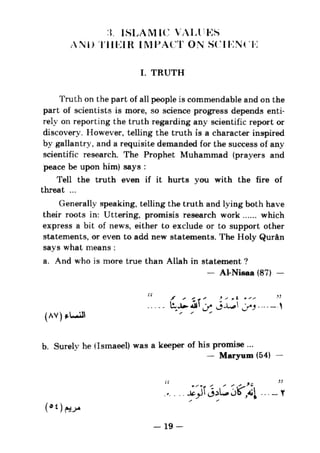
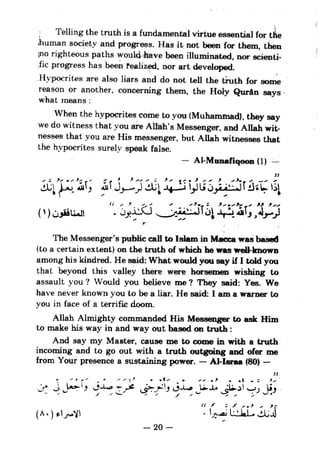
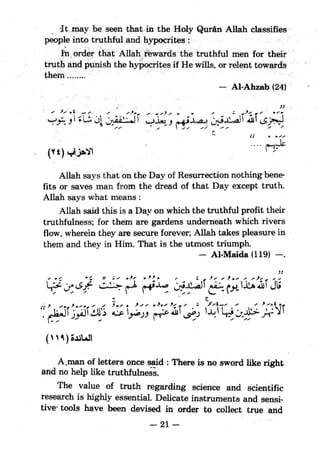
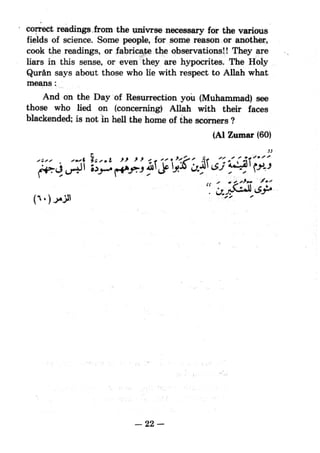
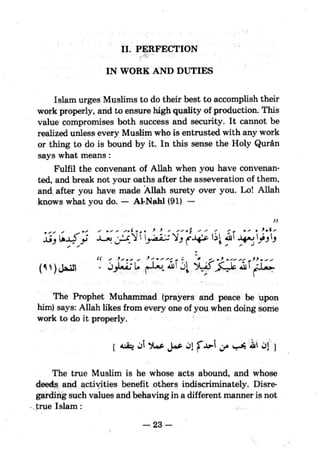
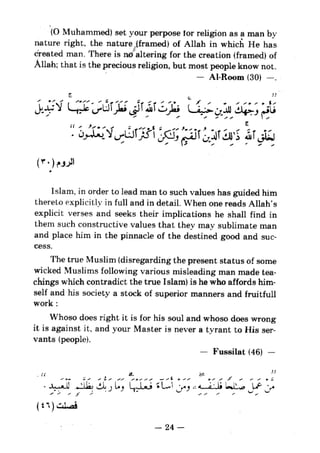





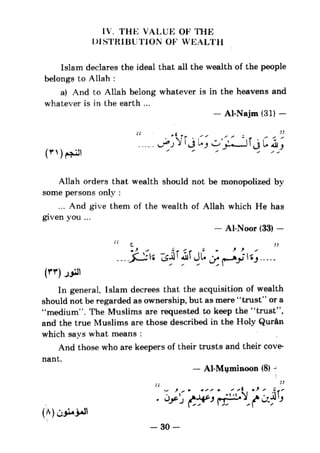



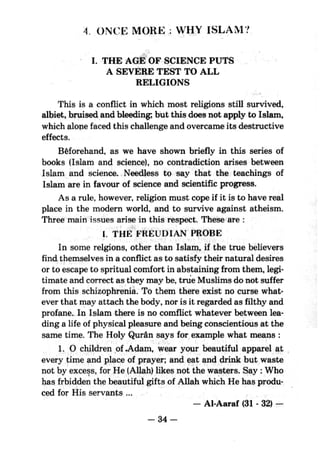

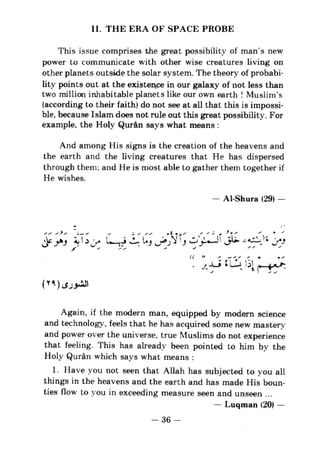
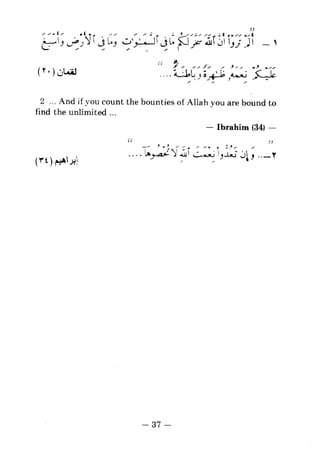
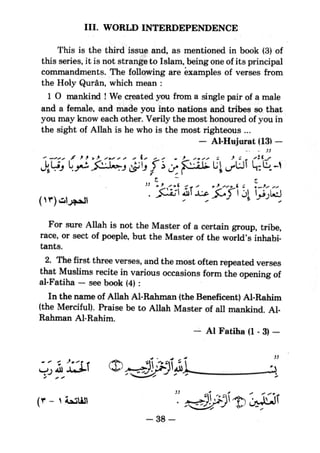
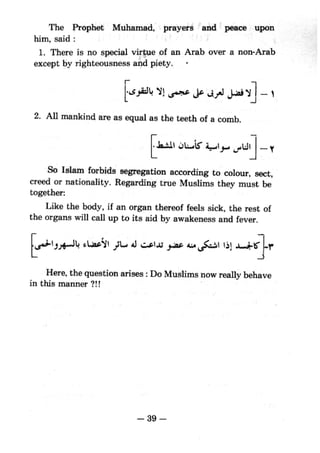

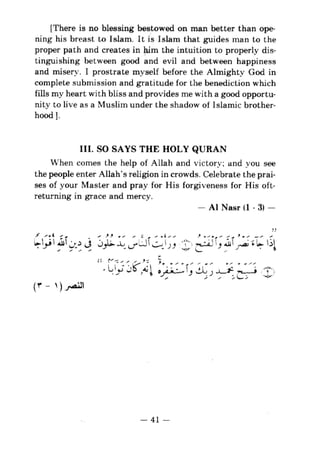
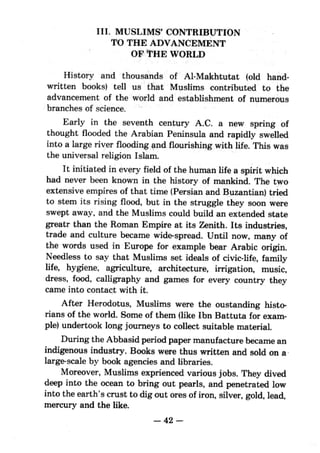
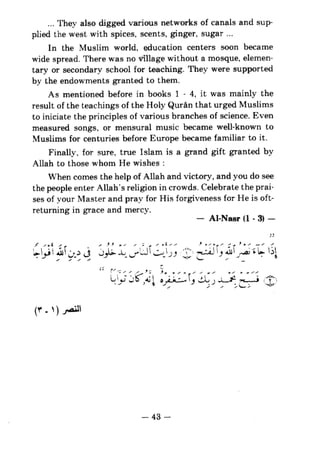


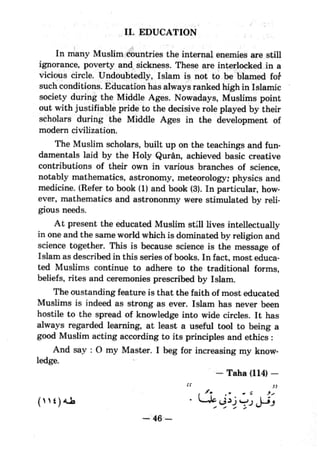
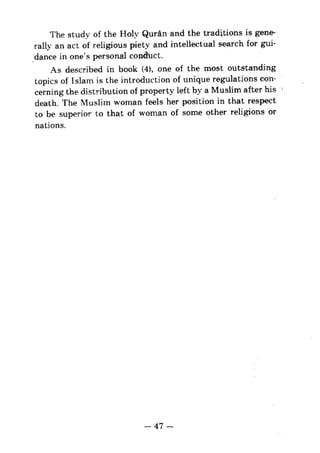


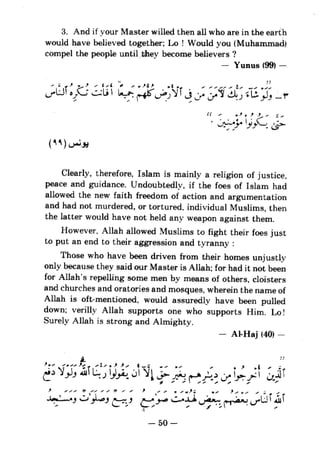
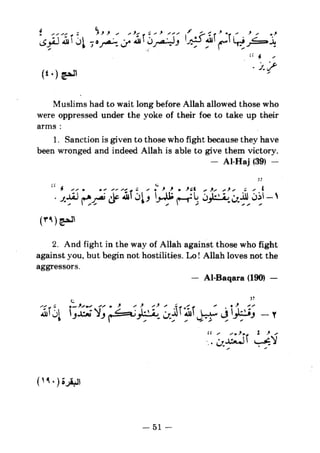
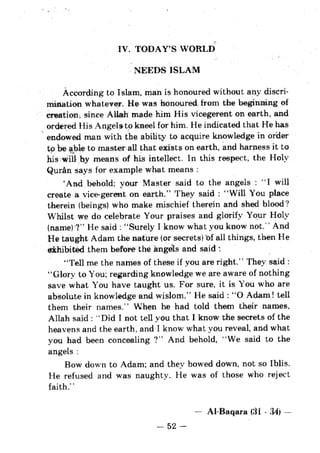
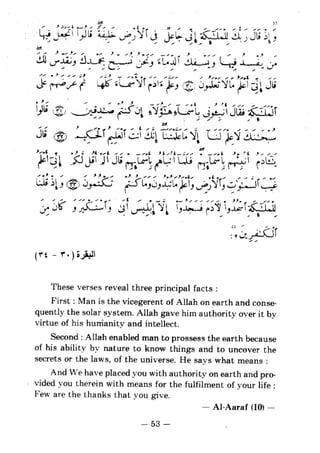

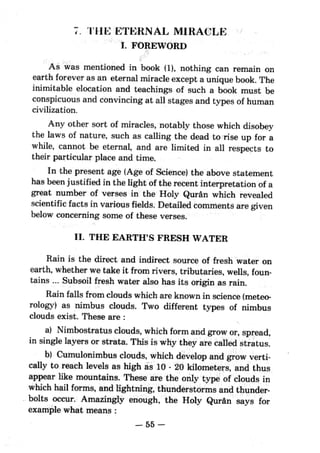
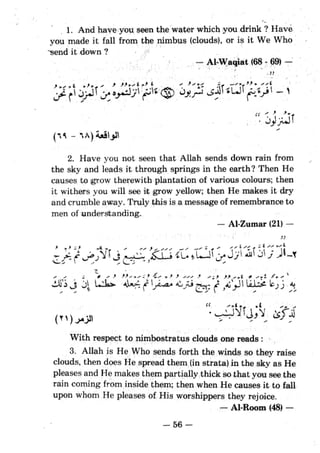
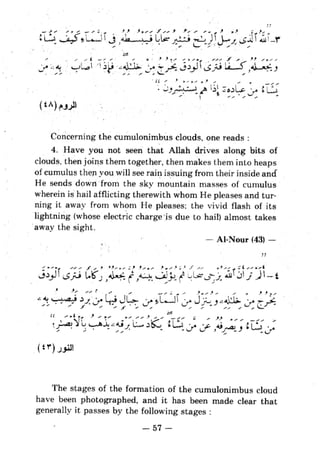

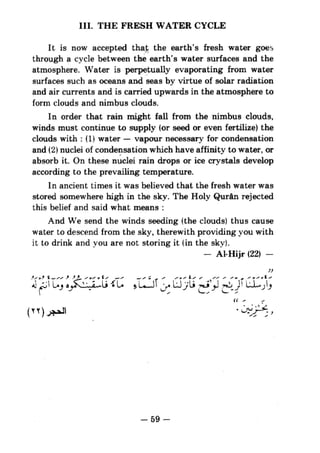
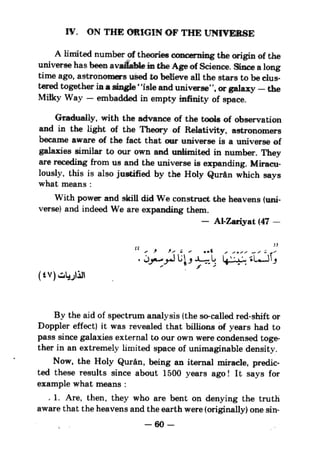

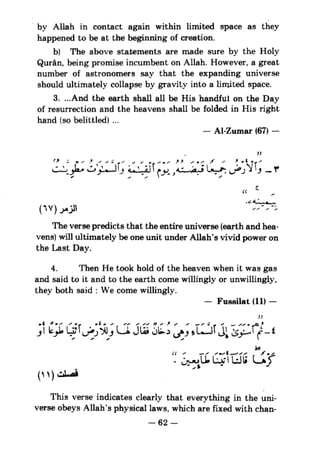
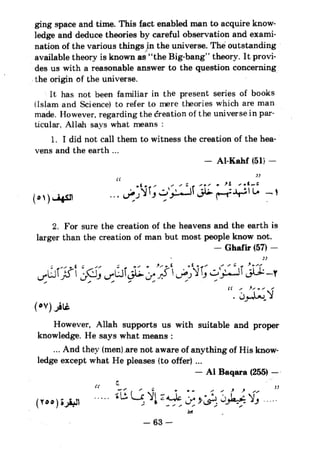
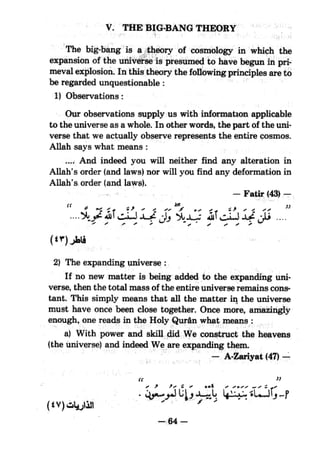
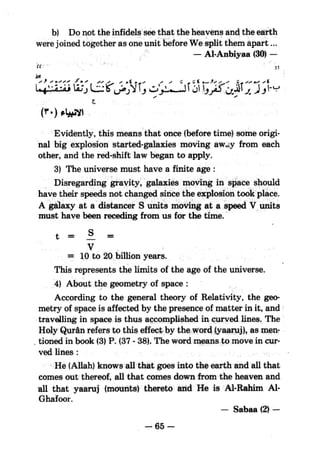
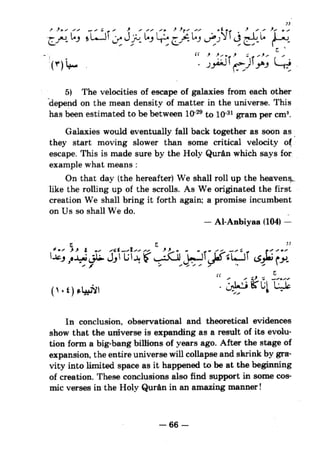
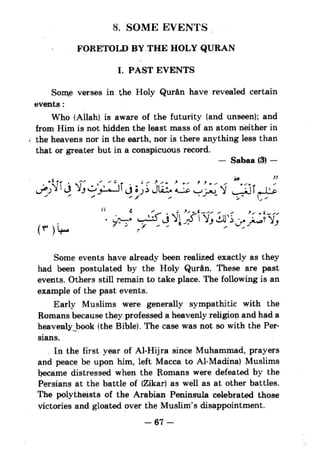
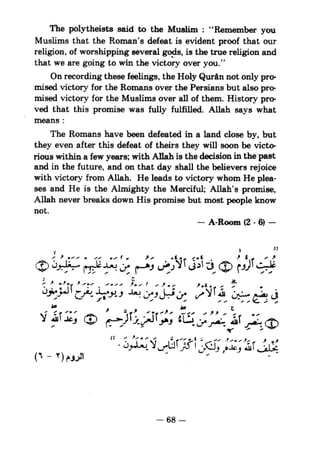

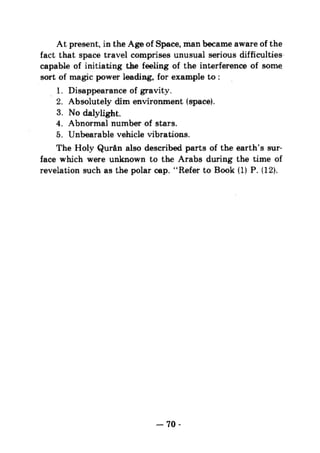


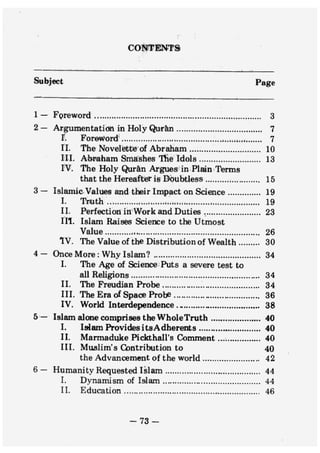
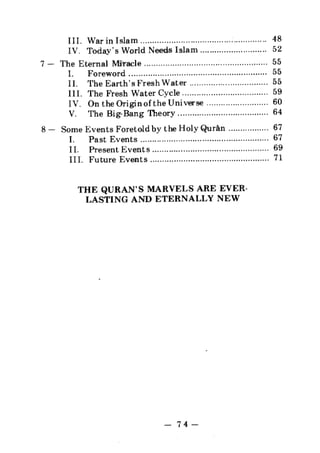
Ad
Recommended
Life of Prophet Muhammad (s.a.w.)
Life of Prophet Muhammad (s.a.w.) Caller To Islam / ž¦┘äž»ž¦ž╣┘Ŗž® ž¦┘äžźž│┘䞦┘ģ┘Ŗ
╠²
1. The document provides biographical details of Prophet Muhammad from his lineage, upbringing, marriages and early life experiences before prophethood.
2. It mentions his birth in Makkah on 9th Rabi-ul-Awwal and being raised by his mother for a few years and then his grandfather and uncle.
3. It summarizes his two journeys to Syria as part of trade caravans where Christian monks foretold his prophethood.
4. It briefly outlines his marriage to Khadijah which lasted 25 years, and the children they had together.Role of state in islam
Role of state in islamEHSAN KHAN
╠²
The document discusses the role of the state in Islam. It outlines that in an Islamic state, authority belongs to God alone and the state acts as a trustee of the people. The role of the state is to ensure both spiritual and material well-being. It is responsible for providing basic needs like food, shelter and education to all citizens. The state also aims to establish social and economic justice, utilize resources effectively, maintain price stability, provide social security and ensure a just distribution of wealth. The state plays a pivotal role in regulating business transactions honestly and enforcing Islamic laws to build a fair economic system.Creation of universe
Creation of universeZuwwar Jadoon
╠²
The document discusses the creation of the universe from both scientific and Islamic perspectives. It describes the scientific Big Bang theory, which holds that the universe began in an enormous explosion from a single point of extremely dense matter around 13.8 billion years ago. It notes parallels between modern scientific understandings of the beginning of the universe and descriptions in the Quran from over 1400 years ago, including creation from nothingness, a tiny initial volume, and expansion of the universe. The document concludes by emphasizing from an Islamic viewpoint that Allah is the creator of the entire universe and everything within it.Creation of universe
Creation of universeLiyana Cik Yana
╠²
The document discusses the creation of the universe according to both the Quran and scientific theories. It summarizes that the Quran mentions 1400 years ago that the universe began from a single point which then exploded, forming galaxies, in agreement with the modern scientific Big Bang theory. The Quran also described correctly prior to science that the heavens and earth used to be joined and then split apart, and that the universe and earth are continuously expanding in shape, like the modern scientific understanding.Science supports the holy quran on the start of the creation of the universe
Science supports the holy quran on the start of the creation of the universe greatest man
╠²
The document argues that modern scientific discoveries, particularly the Big Bang theory, validate the creation of the universe as described in the Quran, which it claims precedes scientific understanding. It cites various scientific evidence, including Hubble's law and cosmic microwave background radiation, to support the assertion that the universe had a beginning, thereby challenging atheism's claim of an eternal universe. The text emphasizes the Quran's alignment with scientific facts and presents it as divine knowledge imparted to Prophet Muhammad, asserting that Islam is the true religion from God.Imam Ali (pbuh), a Master of Leadership- part 1
Imam Ali (pbuh), a Master of Leadership- part 1Farhad Zargari
╠²
The document discusses the life and significance of Imam Ali (pbuh), highlighting his virtues, close relationship with Prophet Muhammad (pbuh), and the profound impact he had as a leader and judge. It emphasizes Imam Ali's universal qualities of justice, faithfulness, and sacrifice, along with his pivotal role in early Islamic history. Furthermore, it mentions his teachings compiled in 'Nahj-ul-balagha,' which offers valuable insights into effective leadership and social justice.The Prophet of Islam, Muhammad (saw)
The Prophet of Islam, Muhammad (saw)Muhammad Irfan
╠²
Prophet Muhammad (peace be upon him) was born in 570 AD in Mecca and received the first revelations of the Quran when he was 40 years old. He faced opposition from the people of Mecca but was able to spread the message of Islam. He migrated from Mecca to Medina in 622 AD, where he established the first Muslim community and mosque. Key events during his prophethood included important military battles, the establishment of laws and practices of Islam, and his final sermon during his last Hajj pilgrimage before passing away from illness in 632 AD at the age of 62.Concept Of Halal & Haram In Islam
Concept Of Halal & Haram In IslamMohammed L
╠²
Bob asked Yunus about the concepts of halal and haram in Islam. Yunus explained that halal refers to things that are permissible according to the Quran and teachings of Prophet Muhammad, while haram refers to things that are prohibited. As an example, Yunus noted that Islam prohibits the consumption of blood, as blood contains uric acid which can be harmful.Seerah of Prophet Muhammad (S)---Madina
Seerah of Prophet Muhammad (S)---Madinaislamicwordpress
╠²
The document summarizes key events from the Madani period of Prophet Muhammad's (SAW) life, including establishing an Islamic administrative system in Madina, early battles against Meccan pagans like Badr and Uhud, treaties with Jewish tribes, the Battle of the Trench against the Quraysh and allied tribes, the Treaty of Hudaybiyah, conquest of Mecca, and the Prophet's final Hajj sermon emphasizing unity and equality among Muslims. Major military conflicts, political developments, and the Prophet's guidance in strengthening the fledgling Islamic society and state are highlighted.The Life of Holy Prophet Muhammad PBUH
The Life of Holy Prophet Muhammad PBUHZeeshan Latif
╠²
The document provides a brief overview of the life of the Prophet Muhammad (PBUH) in 3 sentences:
Muhammad (PBUH) was born in 570 CE in Mecca and began receiving revelations from God at age 40, facing opposition from Meccans but finding support from Muslims in Medina, and spent his later years uniting the Arabian Peninsula under the religion of Islam and establishing the first Islamic community and state.Presentation on the Life of Holy Prophet PBUH
Presentation on the Life of Holy Prophet PBUHSamina Mir
╠²
The document provides an overview of the beginnings of Islam, including the following key points:
1) Prophet Muhammad was born in Mecca in 570 CE and began receiving revelations from God through the angel Jibrail, which became the Quran, beginning in 610 CE.
2) Muhammad began preaching the simple message of Islam - that there is no God but Allah and life should be lived in complete submission to Allah's will.
3) Due to threats in Mecca, Muhammad and his followers migrated to Medina in 622 CE, known as the Hijrah, which became year 1 of the Islamic calendar.
4) Within 10 years, Muhammad had gained many followers and was ableQuran and science
Quran and scienceKhurram Burjees
╠²
The document discusses how the Quran references various scientific fields like astronomy, biology, geology and physics. It provides examples of verses describing embryonic development, the water cycle, luminosity of celestial bodies, and the classification of animals. The purpose of including these scientific facts in the Quran was to guide humanity and demonstrate the truth contained in the holy book.Life of Holy Prophet (pbuh)
Life of Holy Prophet (pbuh)Mansura Akter
╠²
The document provides details about the life of Prophet Muhammad (PBUH). It discusses his birth and upbringing in Mecca, his marriage to Khadija, the start of divine revelations at age 40 while meditating in a cave, and his mission to spread the message of Islam and monotheism despite facing opposition from polytheists in Mecca.An excellent presentation of Prophet Mohammad (PBUH)
An excellent presentation of Prophet Mohammad (PBUH)Syed Zaidi
╠²
The document highlights the profound impact and accomplishments of Prophet Muhammad (pbuh), portraying him as a highly respected leader who transformed society during his lifetime. It includes statements from notable figures who admire his character, teachings, and influence, asserting that he unified warring tribes into a powerful civilization and emphasized moral excellence. Muhammad is depicted as a versatile leader, accomplishing remarkable feats in various fields while remaining humble and dedicated to his mission of promoting the worship of one God.┘鞥žĄ ž¦┘ä┘éž▒ž¦┘å ž¦┘ä┘ā┘Ŗ┘ģ
┘鞥žĄ ž¦┘ä┘éž▒ž¦┘å ž¦┘ä┘ā┘Ŗ┘ģNoor Al Islam
╠²
ž¬ž¬┘垦┘ł┘ä ž¦┘ä┘łž½┘Ŗ┘éž® ┘鞥žĄž¦┘ŗ ┘ģž░┘ā┘łž▒ž® ┘ü┘Ŗ ž¦┘ä┘éž▒žó┘å ž¦┘ä┘āž▒┘Ŗ┘ģ ┘ģ┘å┘枦 ┘鞥ž® žźž©ž▒ž¦┘ć┘Ŗ┘ģ ┘łž¦┘ä┘å┘ģž▒┘łž»žī ┘ł┘鞥ž® ž¦┘äž║┘䞦┘ģ ž¦┘ä┘ģžż┘ģ┘å ž¦┘äž░┘Ŗ ž¬žŁž»┘ē ž¦┘ä┘ģ┘ä┘āžī ┘łžŻžŁž»ž¦ž½ žŻžĄžŁž¦ž© ž¦┘äž«ž»┘łž» ┘łžŻžĄžŁž¦ž© ž¦┘äž│ž©ž¬žī žŁ┘Ŗž½ ž¬ž╣┘āž│ žź┘Ŗ┘ģž¦┘å ž¦┘äž┤ž«žĄ┘Ŗž¦ž¬ ┘ü┘Ŗ ┘ģ┘łž¦ž¼┘ćž® ž¦┘äžĘž║┘Ŗž¦┘å ┘łž¦┘äžĖ┘ä┘ģ. ┘ā┘ģž¦ ž¬ž©ž▒ž▓ ┘鞥žĄ ž¦┘äž╣ž░ž¦ž© ž¦┘äž░┘Ŗ žŁ┘ä ž©ž¦┘äž╣žĄž¦ž® ┘ł┘ā┘Ŗ┘ü žŻ┘å ž¦┘ä┘ģžż┘ģ┘å┘Ŗ┘å ž¦┘äž░┘Ŗ┘å ž¬┘ģž│┘ā┘łž¦ ž©ž»┘Ŗ┘å┘ć┘ģ žŻ┘åž¼┘ł┘ć┘ģ ž¦┘ä┘ä┘ć ┘ģ┘å ž¦┘äž╣ž░ž¦ž©. ž¬┘éž»┘ģ ž¦┘ä┘łž½┘Ŗ┘éž® ž╣ž©ž▒ ┘ćž░┘ć ž¦┘䞣┘āž¦┘Ŗž¦ž¬ ž╣ž©ž▒ž® ž╣┘å ž¦┘䞥ž©ž▒ ┘łž¦┘äž½ž©ž¦ž¬ ┘ü┘Ŗ ž¦┘䞣┘é.žĄ┘üž¦ž¬ ž¦┘ä┘ģ┘łžż┘ģ┘å┘Ŗ┘å ┘ü┘Ŗ ž¦┘ä┘éž▒ž¦┘å ž¦┘ä┘āž▒┘Ŗ┘ģ
žĄ┘üž¦ž¬ ž¦┘ä┘ģ┘łžż┘ģ┘å┘Ŗ┘å ┘ü┘Ŗ ž¦┘ä┘éž▒ž¦┘å ž¦┘ä┘āž▒┘Ŗ┘ģNoor Al Islam
╠²
┘Ŗž¬┘垦┘ł┘ä ž¦┘ä┘ģž│ž¬┘åž» žĄ┘üž¦ž¬ ž¦┘ä┘ģžż┘ģ┘å┘Ŗ┘å ž¦┘䞣┘é┘Ŗ┘é┘Ŗž® ┘ā┘ģž¦ ┘łž▒ž»ž¬ ┘ü┘Ŗ ž¦┘ä┘éž▒žó┘åžī ┘ģ┘łžČžŁ┘ŗž¦ ┘łž¼┘łž© ž¦┘äžź┘Ŗ┘ģž¦┘å ž©ž¦┘ä┘ä┘ć ┘łž▒ž│┘ł┘ä┘ć ┘łžŻ┘ć┘ģ┘Ŗž® ž¦┘䞥┘䞦ž® ┘łž¦┘äž▓┘āž¦ž®. ┘ā┘ģž¦ ┘Ŗžż┘āž» ž╣┘ä┘ē žČž▒┘łž▒ž® ž¦┘䞬žŁ┘ä┘Ŗ ž©žĄ┘üž¦ž¬ ┘ģž½┘ä ž¦┘äž«ž┤┘łž╣žī ž¦┘䞦ž©ž¬ž╣ž¦ž» ž╣┘å ž¦┘ä┘äž║┘łžī ┘łžŁ┘üžĖ ž¦┘䞯┘ģž¦┘垦ž¬žī ┘ģ┘ģž¦ ┘Ŗžżž»┘Ŗ žź┘ä┘ē ž¦┘ä┘ü┘䞦žŁ ┘ü┘Ŗ ž¦┘äž»┘å┘Ŗž¦ ┘łž¦┘äžóž«ž▒ž®. ž¦┘ä┘ģž│ž¬┘åž» ┘Ŗž©ž▒ž▓ ┘ā┘Ŗ┘ü žŻ┘å ┘ćž░┘ć ž¦┘䞥┘üž¦ž¬ ž¬ž╣┘āž│ ž│┘ä┘ł┘ā ž¦┘ä┘üž▒ž» ž¦┘ä┘ģžż┘ģ┘å ┘łž¬ž│ž¦┘ć┘ģ ┘ü┘Ŗ ž©┘垦žĪ ┘ģž¼ž¬┘ģž╣ ┘ģž¬┘ģž¦ž│┘ā.ž¦┘䞬ž¼┘ł┘Ŗž»
ž¦┘䞬ž¼┘ł┘Ŗž»Noor Al Islam
╠²
ž¬ž¬┘垦┘ł┘ä ž¦┘ä┘łž½┘Ŗ┘éž® ┘é┘łž¦ž╣ž» ž¦┘䞬ž¼┘ł┘Ŗž» ž¦┘ä┘ģž¬ž╣┘ä┘éž® ž©┘åžĘ┘é ž¦┘䞣ž▒┘ł┘ü ┘ü┘Ŗ ž¦┘ä┘éž▒žó┘å ž¦┘ä┘āž▒┘Ŗ┘ģžī ┘ģ┘łžČžŁž® ž¦┘ä┘üž▒┘é ž©┘Ŗ┘å ž¦┘䞬┘üž«┘Ŗ┘ģ ┘łž¦┘䞬ž▒┘é┘Ŗ┘é ┘łžĘž▒┘é ┘åžĘ┘é ž¦┘䞣ž▒┘ł┘ü ž¦┘ä┘ģž«ž¬┘ä┘üž®. ┘Ŗž¬┘ģ ž¬žĄ┘å┘Ŗ┘ü ž¦┘䞣ž▒┘ł┘ü žź┘ä┘ē ž½┘䞦ž½ž® žŻ┘éž│ž¦┘ģ: žŁž▒┘ł┘ü ┘ģ┘üž«┘ģž® ž»ž¦ž”┘ģ┘ŗž¦žī žŁž▒┘ł┘ü ž¬┘üž«┘ģ ┘łž¬ž▒┘é┘é žŻžŁ┘Ŗž¦┘å┘ŗž¦žī ┘łžŁž▒┘ł┘ü ┘ģž▒┘é┘éž® ž»ž¦ž”┘ģ┘ŗž¦žī ┘ģž╣ žŻ┘ģž½┘äž® ž¬┘łžČ┘ŖžŁ┘Ŗž® ┘ä┘ā┘ä žŁž▒┘ü. ž¬ž╣ž¬┘ģž» žŻ┘ć┘ģ┘Ŗž® ž¦┘䞬ž¼┘ł┘Ŗž» ž╣┘ä┘ē ž¬žŁž│┘Ŗ┘å ┘éž▒ž¦žĪž® ž¦┘ä┘éž▒žó┘å ┘łžČ┘ģž¦┘å žźž«ž▒ž¦ž¼ ž¦┘䞣ž▒┘ł┘ü ž©ž┤┘ā┘ä žĄžŁ┘ŖžŁ.The path of faith
The path of faithNoor Al Islam
╠²
The document discusses the history and development of artificial intelligence over the past 70 years. It outlines some of the key milestones in AI research including the creation of logic theories, machine learning algorithms, and neural networks. Recent advances in deep learning now allow AI systems to perform complex tasks like image recognition and natural language processing.Islam and science vol 7
Islam and science vol 7Noor Al Islam
╠²
The document discusses the benefits of exercise for mental health. It states that regular physical activity can help reduce anxiety and depression and improve mood and cognitive function. Exercise causes chemical changes in the brain that may help alleviate symptoms of mental illness.Honor thy father and mother
Honor thy father and motherNoor Al Islam
╠²
The document discusses the benefits of exercise for both physical and mental health. It notes that regular exercise can reduce the risk of diseases like heart disease and diabetes, improve mood, and reduce feelings of stress and anxiety. Exercise is also credited with boosting brain health and improving cognitive function as we age.Common questions people ask about islam
Common questions people ask about islamNoor Al Islam
╠²
The document discusses the benefits of meditation for reducing stress and anxiety. Regular meditation practice can help calm the mind and body by lowering heart rate and blood pressure. Making meditation a part of a daily routine, even if just 10-15 minutes per day, can have mental and physical health benefits over time by reducing stress levels and promoting relaxation.More Related Content
Viewers also liked (7)
Concept Of Halal & Haram In Islam
Concept Of Halal & Haram In IslamMohammed L
╠²
Bob asked Yunus about the concepts of halal and haram in Islam. Yunus explained that halal refers to things that are permissible according to the Quran and teachings of Prophet Muhammad, while haram refers to things that are prohibited. As an example, Yunus noted that Islam prohibits the consumption of blood, as blood contains uric acid which can be harmful.Seerah of Prophet Muhammad (S)---Madina
Seerah of Prophet Muhammad (S)---Madinaislamicwordpress
╠²
The document summarizes key events from the Madani period of Prophet Muhammad's (SAW) life, including establishing an Islamic administrative system in Madina, early battles against Meccan pagans like Badr and Uhud, treaties with Jewish tribes, the Battle of the Trench against the Quraysh and allied tribes, the Treaty of Hudaybiyah, conquest of Mecca, and the Prophet's final Hajj sermon emphasizing unity and equality among Muslims. Major military conflicts, political developments, and the Prophet's guidance in strengthening the fledgling Islamic society and state are highlighted.The Life of Holy Prophet Muhammad PBUH
The Life of Holy Prophet Muhammad PBUHZeeshan Latif
╠²
The document provides a brief overview of the life of the Prophet Muhammad (PBUH) in 3 sentences:
Muhammad (PBUH) was born in 570 CE in Mecca and began receiving revelations from God at age 40, facing opposition from Meccans but finding support from Muslims in Medina, and spent his later years uniting the Arabian Peninsula under the religion of Islam and establishing the first Islamic community and state.Presentation on the Life of Holy Prophet PBUH
Presentation on the Life of Holy Prophet PBUHSamina Mir
╠²
The document provides an overview of the beginnings of Islam, including the following key points:
1) Prophet Muhammad was born in Mecca in 570 CE and began receiving revelations from God through the angel Jibrail, which became the Quran, beginning in 610 CE.
2) Muhammad began preaching the simple message of Islam - that there is no God but Allah and life should be lived in complete submission to Allah's will.
3) Due to threats in Mecca, Muhammad and his followers migrated to Medina in 622 CE, known as the Hijrah, which became year 1 of the Islamic calendar.
4) Within 10 years, Muhammad had gained many followers and was ableQuran and science
Quran and scienceKhurram Burjees
╠²
The document discusses how the Quran references various scientific fields like astronomy, biology, geology and physics. It provides examples of verses describing embryonic development, the water cycle, luminosity of celestial bodies, and the classification of animals. The purpose of including these scientific facts in the Quran was to guide humanity and demonstrate the truth contained in the holy book.Life of Holy Prophet (pbuh)
Life of Holy Prophet (pbuh)Mansura Akter
╠²
The document provides details about the life of Prophet Muhammad (PBUH). It discusses his birth and upbringing in Mecca, his marriage to Khadija, the start of divine revelations at age 40 while meditating in a cave, and his mission to spread the message of Islam and monotheism despite facing opposition from polytheists in Mecca.An excellent presentation of Prophet Mohammad (PBUH)
An excellent presentation of Prophet Mohammad (PBUH)Syed Zaidi
╠²
The document highlights the profound impact and accomplishments of Prophet Muhammad (pbuh), portraying him as a highly respected leader who transformed society during his lifetime. It includes statements from notable figures who admire his character, teachings, and influence, asserting that he unified warring tribes into a powerful civilization and emphasized moral excellence. Muhammad is depicted as a versatile leader, accomplishing remarkable feats in various fields while remaining humble and dedicated to his mission of promoting the worship of one God.More from Noor Al Islam (20)
┘鞥žĄ ž¦┘ä┘éž▒ž¦┘å ž¦┘ä┘ā┘Ŗ┘ģ
┘鞥žĄ ž¦┘ä┘éž▒ž¦┘å ž¦┘ä┘ā┘Ŗ┘ģNoor Al Islam
╠²
ž¬ž¬┘垦┘ł┘ä ž¦┘ä┘łž½┘Ŗ┘éž® ┘鞥žĄž¦┘ŗ ┘ģž░┘ā┘łž▒ž® ┘ü┘Ŗ ž¦┘ä┘éž▒žó┘å ž¦┘ä┘āž▒┘Ŗ┘ģ ┘ģ┘å┘枦 ┘鞥ž® žźž©ž▒ž¦┘ć┘Ŗ┘ģ ┘łž¦┘ä┘å┘ģž▒┘łž»žī ┘ł┘鞥ž® ž¦┘äž║┘䞦┘ģ ž¦┘ä┘ģžż┘ģ┘å ž¦┘äž░┘Ŗ ž¬žŁž»┘ē ž¦┘ä┘ģ┘ä┘āžī ┘łžŻžŁž»ž¦ž½ žŻžĄžŁž¦ž© ž¦┘äž«ž»┘łž» ┘łžŻžĄžŁž¦ž© ž¦┘äž│ž©ž¬žī žŁ┘Ŗž½ ž¬ž╣┘āž│ žź┘Ŗ┘ģž¦┘å ž¦┘äž┤ž«žĄ┘Ŗž¦ž¬ ┘ü┘Ŗ ┘ģ┘łž¦ž¼┘ćž® ž¦┘äžĘž║┘Ŗž¦┘å ┘łž¦┘äžĖ┘ä┘ģ. ┘ā┘ģž¦ ž¬ž©ž▒ž▓ ┘鞥žĄ ž¦┘äž╣ž░ž¦ž© ž¦┘äž░┘Ŗ žŁ┘ä ž©ž¦┘äž╣žĄž¦ž® ┘ł┘ā┘Ŗ┘ü žŻ┘å ž¦┘ä┘ģžż┘ģ┘å┘Ŗ┘å ž¦┘äž░┘Ŗ┘å ž¬┘ģž│┘ā┘łž¦ ž©ž»┘Ŗ┘å┘ć┘ģ žŻ┘åž¼┘ł┘ć┘ģ ž¦┘ä┘ä┘ć ┘ģ┘å ž¦┘äž╣ž░ž¦ž©. ž¬┘éž»┘ģ ž¦┘ä┘łž½┘Ŗ┘éž® ž╣ž©ž▒ ┘ćž░┘ć ž¦┘䞣┘āž¦┘Ŗž¦ž¬ ž╣ž©ž▒ž® ž╣┘å ž¦┘䞥ž©ž▒ ┘łž¦┘äž½ž©ž¦ž¬ ┘ü┘Ŗ ž¦┘䞣┘é.žĄ┘üž¦ž¬ ž¦┘ä┘ģ┘łžż┘ģ┘å┘Ŗ┘å ┘ü┘Ŗ ž¦┘ä┘éž▒ž¦┘å ž¦┘ä┘āž▒┘Ŗ┘ģ
žĄ┘üž¦ž¬ ž¦┘ä┘ģ┘łžż┘ģ┘å┘Ŗ┘å ┘ü┘Ŗ ž¦┘ä┘éž▒ž¦┘å ž¦┘ä┘āž▒┘Ŗ┘ģNoor Al Islam
╠²
┘Ŗž¬┘垦┘ł┘ä ž¦┘ä┘ģž│ž¬┘åž» žĄ┘üž¦ž¬ ž¦┘ä┘ģžż┘ģ┘å┘Ŗ┘å ž¦┘䞣┘é┘Ŗ┘é┘Ŗž® ┘ā┘ģž¦ ┘łž▒ž»ž¬ ┘ü┘Ŗ ž¦┘ä┘éž▒žó┘åžī ┘ģ┘łžČžŁ┘ŗž¦ ┘łž¼┘łž© ž¦┘äžź┘Ŗ┘ģž¦┘å ž©ž¦┘ä┘ä┘ć ┘łž▒ž│┘ł┘ä┘ć ┘łžŻ┘ć┘ģ┘Ŗž® ž¦┘䞥┘䞦ž® ┘łž¦┘äž▓┘āž¦ž®. ┘ā┘ģž¦ ┘Ŗžż┘āž» ž╣┘ä┘ē žČž▒┘łž▒ž® ž¦┘䞬žŁ┘ä┘Ŗ ž©žĄ┘üž¦ž¬ ┘ģž½┘ä ž¦┘äž«ž┤┘łž╣žī ž¦┘䞦ž©ž¬ž╣ž¦ž» ž╣┘å ž¦┘ä┘äž║┘łžī ┘łžŁ┘üžĖ ž¦┘䞯┘ģž¦┘垦ž¬žī ┘ģ┘ģž¦ ┘Ŗžżž»┘Ŗ žź┘ä┘ē ž¦┘ä┘ü┘䞦žŁ ┘ü┘Ŗ ž¦┘äž»┘å┘Ŗž¦ ┘łž¦┘äžóž«ž▒ž®. ž¦┘ä┘ģž│ž¬┘åž» ┘Ŗž©ž▒ž▓ ┘ā┘Ŗ┘ü žŻ┘å ┘ćž░┘ć ž¦┘䞥┘üž¦ž¬ ž¬ž╣┘āž│ ž│┘ä┘ł┘ā ž¦┘ä┘üž▒ž» ž¦┘ä┘ģžż┘ģ┘å ┘łž¬ž│ž¦┘ć┘ģ ┘ü┘Ŗ ž©┘垦žĪ ┘ģž¼ž¬┘ģž╣ ┘ģž¬┘ģž¦ž│┘ā.ž¦┘䞬ž¼┘ł┘Ŗž»
ž¦┘䞬ž¼┘ł┘Ŗž»Noor Al Islam
╠²
ž¬ž¬┘垦┘ł┘ä ž¦┘ä┘łž½┘Ŗ┘éž® ┘é┘łž¦ž╣ž» ž¦┘䞬ž¼┘ł┘Ŗž» ž¦┘ä┘ģž¬ž╣┘ä┘éž® ž©┘åžĘ┘é ž¦┘䞣ž▒┘ł┘ü ┘ü┘Ŗ ž¦┘ä┘éž▒žó┘å ž¦┘ä┘āž▒┘Ŗ┘ģžī ┘ģ┘łžČžŁž® ž¦┘ä┘üž▒┘é ž©┘Ŗ┘å ž¦┘䞬┘üž«┘Ŗ┘ģ ┘łž¦┘䞬ž▒┘é┘Ŗ┘é ┘łžĘž▒┘é ┘åžĘ┘é ž¦┘䞣ž▒┘ł┘ü ž¦┘ä┘ģž«ž¬┘ä┘üž®. ┘Ŗž¬┘ģ ž¬žĄ┘å┘Ŗ┘ü ž¦┘䞣ž▒┘ł┘ü žź┘ä┘ē ž½┘䞦ž½ž® žŻ┘éž│ž¦┘ģ: žŁž▒┘ł┘ü ┘ģ┘üž«┘ģž® ž»ž¦ž”┘ģ┘ŗž¦žī žŁž▒┘ł┘ü ž¬┘üž«┘ģ ┘łž¬ž▒┘é┘é žŻžŁ┘Ŗž¦┘å┘ŗž¦žī ┘łžŁž▒┘ł┘ü ┘ģž▒┘é┘éž® ž»ž¦ž”┘ģ┘ŗž¦žī ┘ģž╣ žŻ┘ģž½┘äž® ž¬┘łžČ┘ŖžŁ┘Ŗž® ┘ä┘ā┘ä žŁž▒┘ü. ž¬ž╣ž¬┘ģž» žŻ┘ć┘ģ┘Ŗž® ž¦┘䞬ž¼┘ł┘Ŗž» ž╣┘ä┘ē ž¬žŁž│┘Ŗ┘å ┘éž▒ž¦žĪž® ž¦┘ä┘éž▒žó┘å ┘łžČ┘ģž¦┘å žźž«ž▒ž¦ž¼ ž¦┘䞣ž▒┘ł┘ü ž©ž┤┘ā┘ä žĄžŁ┘ŖžŁ.The path of faith
The path of faithNoor Al Islam
╠²
The document discusses the history and development of artificial intelligence over the past 70 years. It outlines some of the key milestones in AI research including the creation of logic theories, machine learning algorithms, and neural networks. Recent advances in deep learning now allow AI systems to perform complex tasks like image recognition and natural language processing.Islam and science vol 7
Islam and science vol 7Noor Al Islam
╠²
The document discusses the benefits of exercise for mental health. It states that regular physical activity can help reduce anxiety and depression and improve mood and cognitive function. Exercise causes chemical changes in the brain that may help alleviate symptoms of mental illness.Honor thy father and mother
Honor thy father and motherNoor Al Islam
╠²
The document discusses the benefits of exercise for both physical and mental health. It notes that regular exercise can reduce the risk of diseases like heart disease and diabetes, improve mood, and reduce feelings of stress and anxiety. Exercise is also credited with boosting brain health and improving cognitive function as we age.Common questions people ask about islam
Common questions people ask about islamNoor Al Islam
╠²
The document discusses the benefits of meditation for reducing stress and anxiety. Regular meditation practice can help calm the mind and body by lowering heart rate and blood pressure. Making meditation a part of a daily routine, even if just 10-15 minutes per day, can have mental and physical health benefits over time by reducing stress levels and promoting relaxation.žŻž│┘ģž¦žĪ ┘łžĄ┘üž¦ž¬ ž¦┘ä┘ä┘ć ž╣ž▓ ┘łž¼┘ä 4
žŻž│┘ģž¦žĪ ┘łžĄ┘üž¦ž¬ ž¦┘ä┘ä┘ć ž╣ž▓ ┘łž¼┘ä 4Noor Al Islam
╠²
žŻž│┘ģž¦žĪ ┘łžĄ┘üž¦ž¬ ž¦┘ä┘ä┘ć ž╣ž▓ ┘łž¼┘ä 4žŻž│┘ģž¦žĪ ┘łžĄ┘üž¦ž¬ ž¦┘ä┘ä┘ć ž╣ž▓ ┘łž¼┘ä 3
žŻž│┘ģž¦žĪ ┘łžĄ┘üž¦ž¬ ž¦┘ä┘ä┘ć ž╣ž▓ ┘łž¼┘ä 3Noor Al Islam
╠²
žŻž│┘ģž¦žĪ ┘łžĄ┘üž¦ž¬ ž¦┘ä┘ä┘ć ž╣ž▓ ┘łž¼┘ä 3žŻž│┘ģž¦žĪ ┘łžĄ┘üž¦ž¬ ž¦┘ä┘ä┘ć ž╣ž▓ ┘łž¼┘ä 1
žŻž│┘ģž¦žĪ ┘łžĄ┘üž¦ž¬ ž¦┘ä┘ä┘ć ž╣ž▓ ┘łž¼┘ä 1Noor Al Islam
╠²
žŻž│┘ģž¦žĪ ┘łžĄ┘üž¦ž¬ ž¦┘ä┘ä┘ć ž╣ž▓ ┘łž¼┘ä 1žŻž│┘ģž¦žĪ ┘łžĄ┘üž¦ž¬ ž¦┘ä┘ä┘ć ž╣ž▓ ┘łž¼┘ä 2
žŻž│┘ģž¦žĪ ┘łžĄ┘üž¦ž¬ ž¦┘ä┘ä┘ć ž╣ž▓ ┘łž¼┘ä 2Noor Al Islam
╠²
žŻž│┘ģž¦žĪ ┘łžĄ┘üž¦ž¬ ž¦┘ä┘ä┘ć ž╣ž▓ ┘łž¼┘ä 2Ad
Recently uploaded (20)
Battle of Bookworms 2025 - U25 Literature Quiz by Pragya
Battle of Bookworms 2025 - U25 Literature Quiz by Pragya Pragya - UEM Kolkata Quiz Club
╠²
Battle of Bookworms is a literature quiz organized by Pragya, UEM Kolkata, as part of their cultural fest Ecstasia. Curated by quizmasters Drisana Bhattacharyya, Argha Saha, and Aniket Adhikari, the quiz was a dynamic mix of classical literature, modern writing, mythology, regional texts, and experimental literary forms. It began with a 20-question prelim round where ŌĆśstar questionsŌĆÖ played a key tie-breaking role. The top 8 teams moved into advanced rounds, where they faced audio-visual challenges, pounce/bounce formats, immunity tokens, and theme-based risk-reward questions. From Orwell and Hemingway to Tagore and Sarala Das, the quiz traversed a global and Indian literary landscape. Unique rounds explored slipstream fiction, constrained writing, adaptations, and true crime literature. It included signature IDs, character identifications, and open-pounce selections. Questions were crafted to test contextual understanding, narrative knowledge, and authorial intent, making the quiz both intellectually rewarding and culturally rich. Battle of Bookworms proved literature quizzes can be insightful, creative, and deeply enjoyable for all.Community Health Nursing Approaches, Concepts, Roles & Responsibilities ŌĆō Uni...
Community Health Nursing Approaches, Concepts, Roles & Responsibilities ŌĆō Uni...RAKESH SAJJAN
╠²
This PowerPoint presentation is based on Unit 6 ŌĆō Community Health Nursing Approaches, Concepts, Roles & Responsibilities of Community Health Nursing Personnel, designed for B.Sc Nursing 5th Semester students under the subject Community Health Nursing ŌĆō I, following the syllabus of the Indian Nursing Council (INC).
This unit focuses on the various approaches in community health, the organizational framework, and the responsibilities of different levels of nursing staff in the healthcare system. It emphasizes the real-world application of nursing principles to provide comprehensive and preventive care to the community.
¤ōś Key Areas Covered in this Presentation:
Introduction to the concept of community health nursing
Approaches to community health:
Nursing Process Approach
Epidemiological Approach
Evidence-Based Approach
Problem-Solving Approach
Nursing Theories in Community Health Practice
Explanation of teamwork and intersectoral coordination
Concept of primary health care and its application in community nursing
Levels of health care delivery ŌĆō primary, secondary, and tertiary care
Home visit process: principles, planning, implementation, and follow-up
Use of community bag and record maintenance
Roles and responsibilities of:
Auxiliary Nurse Midwives (ANMs)
Community Health Officers (CHOs)
Staff Nurses
ASHA workers
Public Health Nurses (PHNs)
Documentation and reporting in community settings
Promotion of health education, immunization, maternal and child health, and nutritional support
Role of nurse in disease surveillance, outbreak control, and health promotion
Ethical principles in community nursing
Coordination with health team members and village health committees
This presentation is useful for:
Nursing students preparing for university theory exams, class tests, or viva
Nursing educators conducting lectures or field discussions
Interns and trainees working in PHCs, sub-centers, or community settings
Community nurses and health educators involved in rural and urban outreach
The content is simplified, clear, and enhanced with point-wise explanations, flowcharts, and field-related examples for better retention and application.SCHIZOPHRENIA OTHER PSYCHOTIC DISORDER LIKE Persistent delusion/Capgras syndr...
SCHIZOPHRENIA OTHER PSYCHOTIC DISORDER LIKE Persistent delusion/Capgras syndr...parmarjuli1412
╠²
SCHIZOPHRENIA INCLUDED TOPIC IS INTRODUCTION, DEFINITION OF GENERAL TERM IN PSYCHIATRIC, THEN DIFINITION OF SCHIZOPHRENIA, EPIDERMIOLOGY, ETIOLOGICAL FACTORS, CLINICAL FEATURE(SIGN AND SYMPTOMS OF SCHIZOPHRENIA), CLINICAL TYPES OF SCHIZOPHRENIA, DIAGNOSIS, INVESTIGATION, TREATMENT MODALITIES(PHARMACOLOGICAL MANAGEMENT, PSYCHOTHERAPY, ECT, PSYCHO-SOCIO-REHABILITATION), NURSING MANAGEMENT(ASSESSMENT,DIAGNOSIS,NURSING INTERVENTION,AND EVALUATION), OTHER PSYCHOTIC DISORDER LIKE Persistent delusion/Capgras syndrome(The Delusion of Doubles)/Acute and Transient Psychotic Disorders/Induced Delusional Disorders/Schizoaffective Disorder /CAPGRAS SYNDROME(DELUSION OF DOUBLE), GERIATRIC CONSIDERATION, FOLLOW UP, HOMECARE AND REHABILITATION OF THE PATIENT, How to Manage Multi Language for Invoice in Odoo 18
How to Manage Multi Language for Invoice in Odoo 18Celine George
╠²
Odoo supports multi-language functionality for invoices, allowing you to generate invoices in your customersŌĆÖ preferred languages. Multi-language support for invoices is crucial for businesses operating in global markets or dealing with customers from different linguistic backgrounds. BINARY files CSV files JSON files with example.pptx
BINARY files CSV files JSON files with example.pptxRamakrishna Reddy Bijjam
╠²
BINARY FILES, CSV FILESK12 Tableau User Group virtual event June 18, 2025
K12 Tableau User Group virtual event June 18, 2025dogden2
╠²
National K12 Tableau User Group: June 2025 meeting slidesNon-Communicable Diseases and National Health Programs ŌĆō Unit 10 | B.Sc Nursi...
Non-Communicable Diseases and National Health Programs ŌĆō Unit 10 | B.Sc Nursi...RAKESH SAJJAN
╠²
This PowerPoint presentation is prepared for Unit 10 ŌĆō Non-Communicable Diseases and National Health Programs, as per the 5th Semester B.Sc Nursing syllabus outlined by the Indian Nursing Council (INC) under the subject Community Health Nursing ŌĆō I.
This unit focuses on equipping students with knowledge of the causes, prevention, and control of non-communicable diseases (NCDs), which are a major public health challenge in India. The presentation emphasizes the nurseŌĆÖs role in early detection, screening, management, and referral services under national-level programs.
¤ö╣ Key Topics Included:
Definition, burden, and impact of NCDs in India
Epidemiology, risk factors, signs/symptoms, prevention, and management of:
Diabetes Mellitus
Hypertension
Cardiovascular Diseases
Stroke & Obesity
Thyroid Disorders
Blindness
Deafness
Injuries and Accidents (incl. road traffic injuries and trauma guidelines)
NCD-2 Cancers:
Breast Cancer
Cervical Cancer
Oral Cancer
Risk factors, screening, diagnosis, early signs, referral & palliative care
Role of nurse in screening, referral, counseling, and continuum of care
National Programs:
National Program for Prevention and Control of Cancer, Diabetes, Cardiovascular Diseases and Stroke (NPCDCS)
National Program for Control of Blindness
National Program for Prevention and Control of Deafness
National Tobacco Control Program (NTCP)
Introduction to Universal Health Coverage and Ayushman Bharat
Use of standard treatment protocols and referral flowcharts
This presentation is ideal for:
Classroom lectures, field assignments, health education planning, and student projects
Preparing for university exams, class tests, and community field postingsPests of Maize: An comprehensive overview.pptx
Pests of Maize: An comprehensive overview.pptxArshad Shaikh
╠²
Maize is susceptible to various pests that can significantly impact yields. Key pests include the fall armyworm, stem borers, cob earworms, shoot fly. These pests can cause extensive damage, from leaf feeding and stalk tunneling to grain destruction. Effective management strategies, such as integrated pest management (IPM), resistant varieties, biological control, and judicious use of chemicals, are essential to mitigate losses and ensure sustainable maize production.Code Profiling in Odoo 18 - Odoo 18 ║▌║▌▀Żs
Code Profiling in Odoo 18 - Odoo 18 ║▌║▌▀ŻsCeline George
╠²
Profiling in Odoo identifies slow code and resource-heavy processes, ensuring better system performance. Odoo code profiling detects bottlenecks in custom modules, making it easier to improve speed and scalability.Introduction to Generative AI and Copilot.pdf
Introduction to Generative AI and Copilot.pdfTechSoup
╠²
In this engaging and insightful two-part webinar series, where we will dive into the essentials of generative AI, address key AI concerns, and demonstrate how nonprofits can benefit from using MicrosoftŌĆÖs AI assistant, Copilot, to achieve their goals.
This event series to help nonprofits obtain Copilot skills is made possible by generous support from Microsoft.PEST OF WHEAT SORGHUM BAJRA and MINOR MILLETS.pptx
PEST OF WHEAT SORGHUM BAJRA and MINOR MILLETS.pptxArshad Shaikh
╠²
Wheat, sorghum, and bajra (pearl millet) are susceptible to various pests that can significantly impact crop yields. Common pests include aphids, stem borers, shoot flies, and armyworms. Aphids feed on plant sap, weakening the plants, while stem borers and shoot flies damage the stems and shoots, leading to dead hearts and reduced growth. Armyworms, on the other hand, are voracious feeders that can cause extensive defoliation and grain damage. Effective management strategies, including resistant varieties, cultural practices, and targeted pesticide applications, are essential to mitigate pest damage and ensure healthy crop production.ABCs of Bookkeeping for Nonprofits TechSoup.pdf
ABCs of Bookkeeping for Nonprofits TechSoup.pdfTechSoup
╠²
Accounting can be hard enough if you havenŌĆÖt studied it in school. Nonprofit accounting is actually very different and more challenging still.
Need help? Join Nonprofit CPA and QuickBooks expert Gregg Bossen in this first-time webinar and learn the ABCs of keeping books for a nonprofit organization.
Key takeaways
* What accounting is and how it works
* How to read a financial statement
* What financial statements should be given to the board each month
* What three things nonprofits are required to track
What features to use in QuickBooks to track programs and grants2025 June Year 9 Presentation: Subject selection.pptx
2025 June Year 9 Presentation: Subject selection.pptxmansk2
╠²
2025 June Year 9 Presentation: Subject selectionAd
